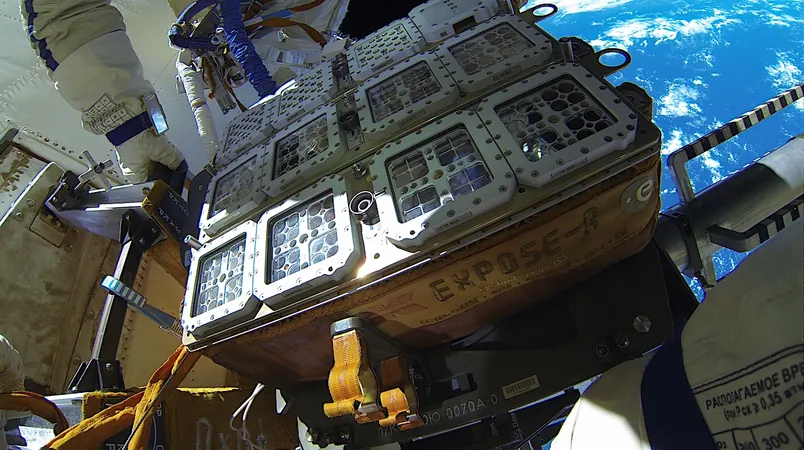
Groundbreaking ISS Research Unravels Secrets of Amino Acids and Martian Soil: What Could This Mean for Life on Mars?
2025-03-31
Author: Li
Groundbreaking ISS Research Unravels Secrets of Amino Acids and Martian Soil: What Could This Mean for Life on Mars?
A team of scientists conducting experiments on the International Space Station (ISS) as part of the European Space Agency's EXPOSE-R2 mission has made remarkable discoveries regarding the behavior of the amino acid alanine in conjunction with montmorillonite clay, a material resembling that found on Mars. The research took place from 2014 to 2016 and aimed to explore how montmorillonite can protect organic compounds from damaging ultraviolet (UV) radiation that is prevalent in the harsh conditions of space.
Through the Photochemistry on the Space Station (PSS) experiment, researchers focused on the protective qualities of montmorillonite and its ability to catalyze the breakdown of alanine when exposed to UV radiation. By testing various configurations of alanine thin films—some shielded by a montmorillonite cover and others intermixed with the clay—the scientists aimed to determine how these combinations reacted under space conditions over a period of 15.5 months.
After returning the samples to Earth, extensive analysis was performed, including Fourier-transform infrared (FTIR) spectroscopy to track molecular changes across both space-exposed and ground-control samples. This extensive profiling provided deeper insights into the photochemical behavior of alanine in different environments.
Surprisingly, findings demonstrated a dual effect of montmorillonite on alanine stabilization. While a protective layer of clay reduces degradation, a direct combination with alanine accelerates its photochemical breakdown by promoting certain reactions. This indicates that a minimal protective layer of several millimeters of montmorillonite would be critical in shielding essential organic compounds from Mars' intense UV radiation.
Additionally, the experiment highlighted the role of carbon dioxide (CO2), a byproduct of alanine breakdown, which can potentially be trapped in the clay's interlayers. This discovery not only sheds light on the stability of amino acids in extraterrestrial environments but also opens doors to better understanding the potential for life on Mars, where the existence of organic compounds could be key indicators of past or present life.
The implications of this research could transform our understanding of astrobiology and the search for life beyond Earth. As missions to Mars and other celestial bodies continue, findings like these present vital clues on how we might protect and search for life-sustaining compounds in the universe.
Stay tuned as we dive deeper into ongoing explorations and revolutionary discoveries that could redefine our place in the cosmos!




 Brasil (PT)
Brasil (PT)
 Canada (EN)
Canada (EN)
 Chile (ES)
Chile (ES)
 Česko (CS)
Česko (CS)
 대한민국 (KO)
대한민국 (KO)
 España (ES)
España (ES)
 France (FR)
France (FR)
 Hong Kong (EN)
Hong Kong (EN)
 Italia (IT)
Italia (IT)
 日本 (JA)
日本 (JA)
 Magyarország (HU)
Magyarország (HU)
 Norge (NO)
Norge (NO)
 Polska (PL)
Polska (PL)
 Schweiz (DE)
Schweiz (DE)
 Singapore (EN)
Singapore (EN)
 Sverige (SV)
Sverige (SV)
 Suomi (FI)
Suomi (FI)
 Türkiye (TR)
Türkiye (TR)
 الإمارات العربية المتحدة (AR)
الإمارات العربية المتحدة (AR)